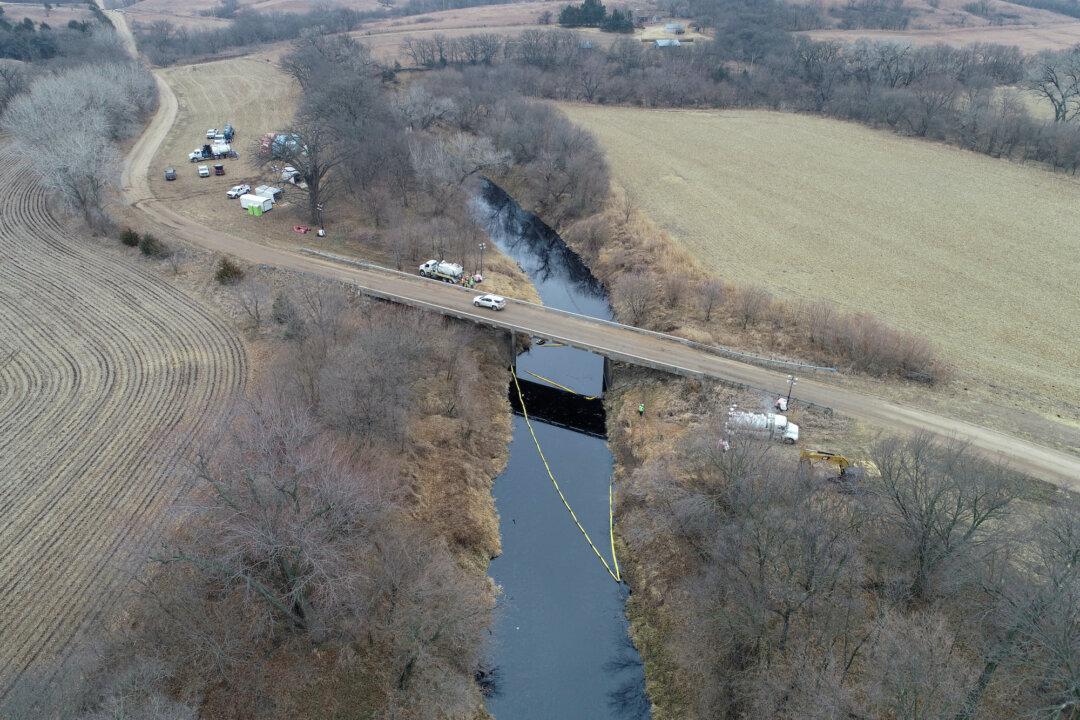Local officials in Kansas said Tuesday that the cleanup of the spill from the Keystone Pipeline, which carries crude oil from Canada to multiple U.S. states, will take a few more weeks.
It’s not yet known when the pipeline will resume operations after it was shut down on Dec. 8 after a spill of nearly 14,000 barrels of crude the day before at a segment of the system located in Washington County, Kansas.





